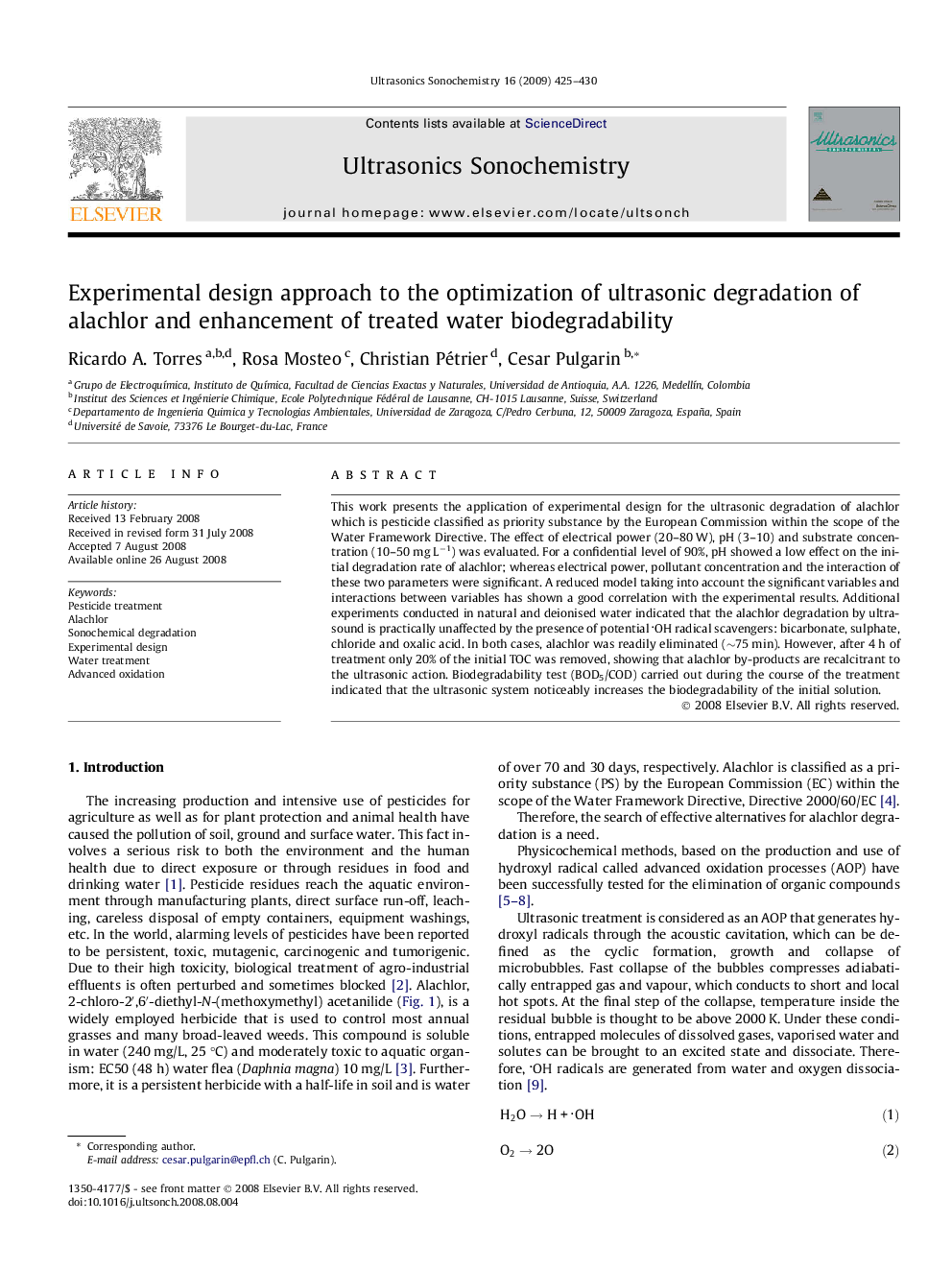| Article ID | Journal | Published Year | Pages | File Type |
|---|---|---|---|---|
| 1265937 | Ultrasonics Sonochemistry | 2009 | 6 Pages |
This work presents the application of experimental design for the ultrasonic degradation of alachlor which is pesticide classified as priority substance by the European Commission within the scope of the Water Framework Directive. The effect of electrical power (20–80 W), pH (3–10) and substrate concentration (10–50 mg L−1) was evaluated. For a confidential level of 90%, pH showed a low effect on the initial degradation rate of alachlor; whereas electrical power, pollutant concentration and the interaction of these two parameters were significant. A reduced model taking into account the significant variables and interactions between variables has shown a good correlation with the experimental results. Additional experiments conducted in natural and deionised water indicated that the alachlor degradation by ultrasound is practically unaffected by the presence of potential OH radical scavengers: bicarbonate, sulphate, chloride and oxalic acid. In both cases, alachlor was readily eliminated (∼75 min). However, after 4 h of treatment only 20% of the initial TOC was removed, showing that alachlor by-products are recalcitrant to the ultrasonic action. Biodegradability test (BOD5/COD) carried out during the course of the treatment indicated that the ultrasonic system noticeably increases the biodegradability of the initial solution.
